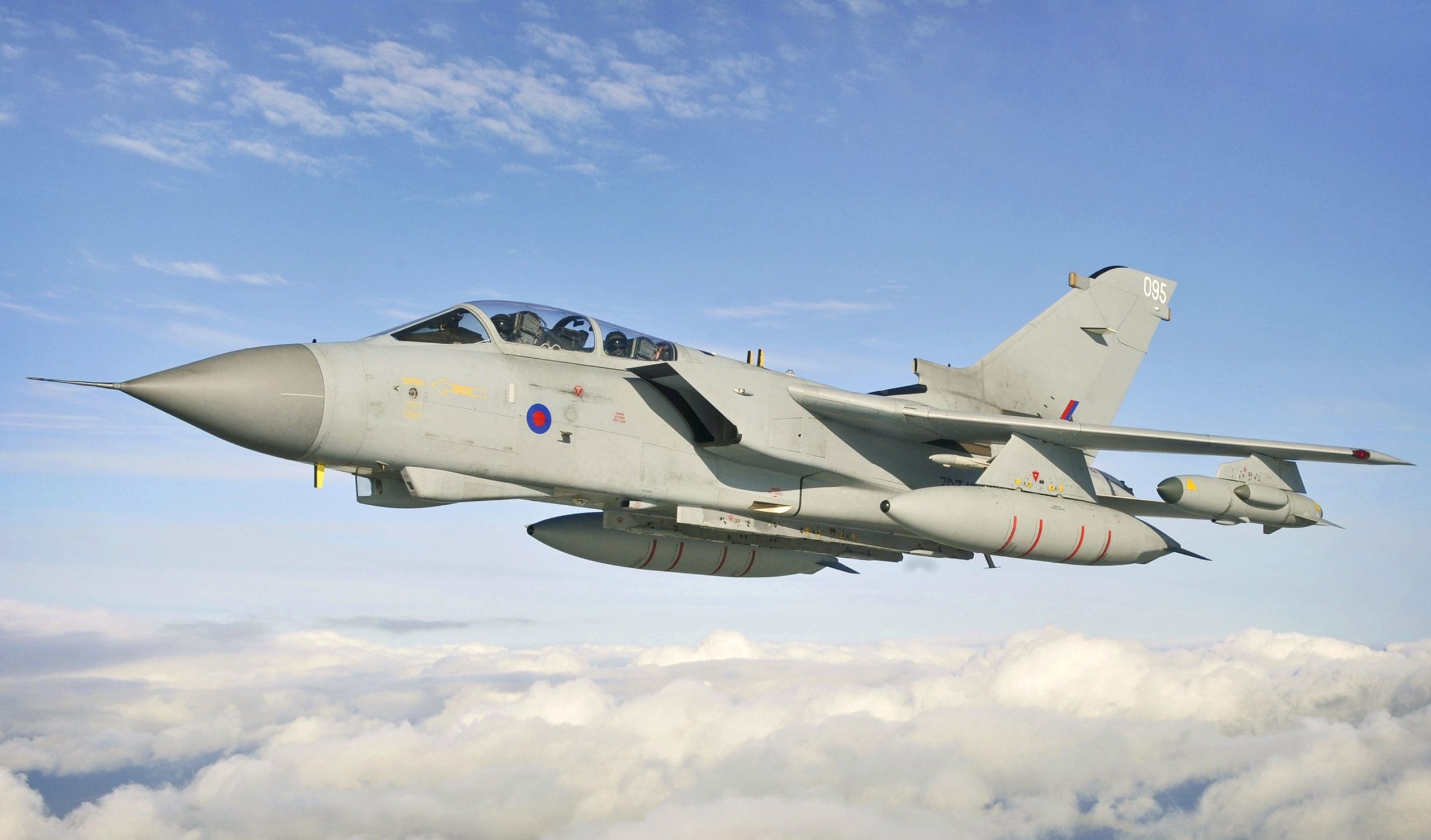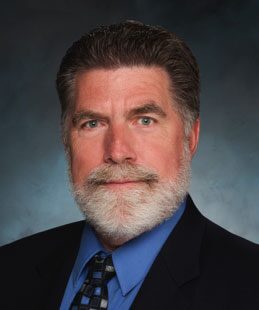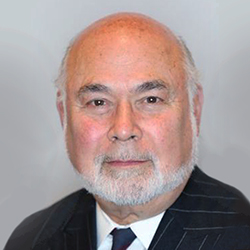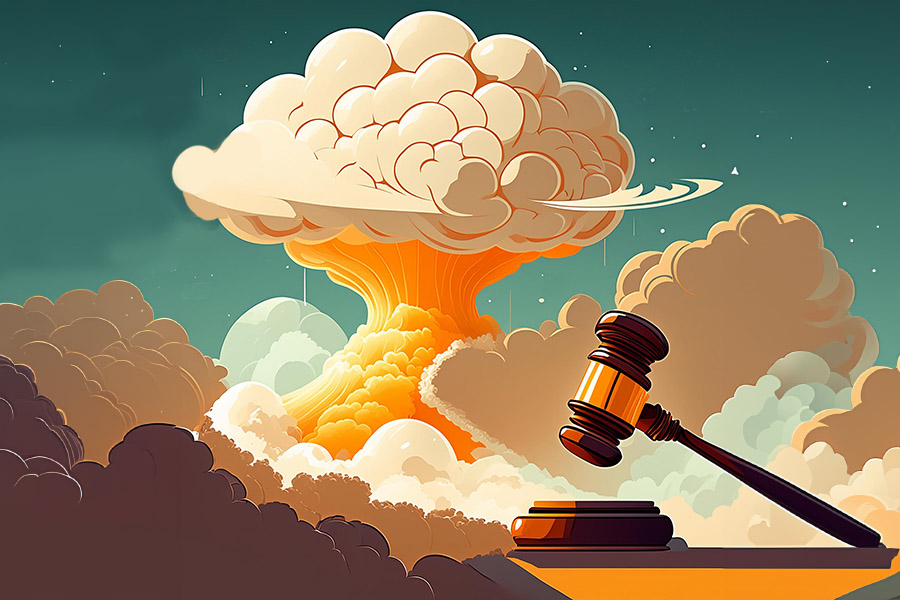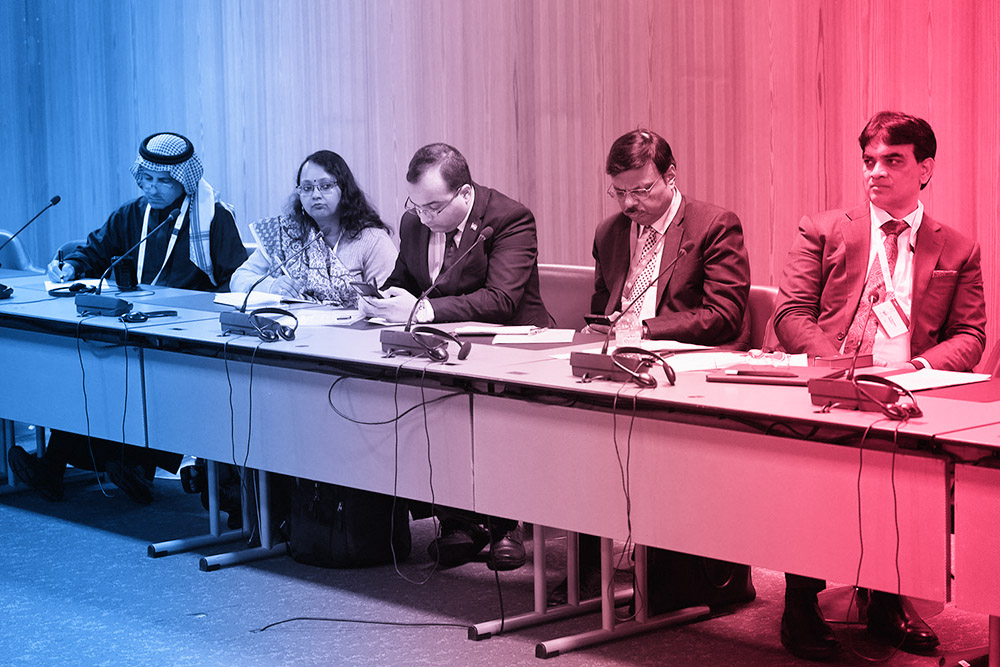It is very important to understand the logic of those with whom we do not agree. It is unwise to disregard the thinking that gives rise to the reality of today’s nuclear threats as summarily foolish, or worse, done in bad faith. As Germany approaches a decision on whether to replace its fleet of Tornado aircraft with a modern nuclear model, the influential Brad Roberts argues in favor of upgrading the fleet and continuing NATO’s nuclear sharing agreement.
Roberts was US Deputy Assistant Secretary of Defense for Nuclear and Missile Defense Policy and presently serves as Director of the Lawrence Livermore National Laboratory’s Center for Global Security Research. In the working paper below, “Germany and NATO’s Nuclear Deterrent,” he argues that Germany should replace its current fighter-bombers with a new nuclear-certified model and thus continue its NATO’s nuclear sharing arrangement.
The very respected German Parliamentarian Uta Zapf has written two articles in rebuttal. Ms. Zapf served as the Chair of the Bundestag (German Parliament) Sub-Committee on Disarmament Arms Control and Nonproliferation under both Social Democrat and CDU (conservative) governments. She has served as head of the German Delegation to the NATO Parliamentary Assembly, OSCE Parliamentary Assembly and Inter Parliamentary Union – and was Vice President of the OSCE Parliamentary Assembly. She is a leading member of Global Zero. We agree with her but urge your reading Mr. Roberts to understand the sophistication and premises of those who want to continue to pursue the brandishing of the weapons as a means of sustaining peace and stability.
Editor’s Note: Since its Tornado aircraft are rapidly approaching end-of-service, Germany has to make a far-reaching decision: Will it replace the fighter-bomber with a nuclear-certified model, thus continuing its contribution to NATO’s nuclear sharing arrangement? This paper explains why to do so is in Germany’s interest as well as in the interest of European and Transatlantic security as a whole – and what significant unintended costs Germany’s opting-out of nuclear sharing would have.
The benefits to Germany of retiring and not replacing its small fleet of nuclear-certified Tornado fighterbombers are obvious. The German defense budget would save a bit of money. And a political irritant would be removed, given widespread public opposition to nuclear weapons. But what about the costs and risks? Four primary costs can be anticipated of a German decision to opt out of the alliance’s nuclear deterrent mission: to NATO’s nuclear deterrent, to NATO’s arms control strategy, to NATO’s nuclear consultative process, and to Germany’s reputation. One significant risk can also be anticipated – which, if realized, would greatly magnify the costs to NATO’s deterrent and to European security. So, let’s understand this risk before assessing costs.
The risk in a German decision to opt out of the nuclear mission is that others will follow the German example, precipitating the collapse of NATO’s nuclear sharing arrangements. These arrangements were agreed in the 1960s as a way to share nuclear burdens, signal collective resolve, ensure effective political control, and prevent further nuclear proliferation in Europe. NATO leaders have repeatedly endorsed them as central to European security, including most recently at the June 2021 Brussels summit. These sharing arrangements can involve hosting US nuclear weapons, owning and operating aircraft capable of delivering those weapons, and/or participating in preparations for their employment. Six countries currently operate aircraft capable of delivering US nuclear weapons. For most, the mission is a domestic political liability. In a couple of countries, the political coalitions in favor of remaining in the nuclear mission are especially fragile. A German decision to unilaterally withdraw from the nuclear mission could well tip the balance of debate in those countries in favor of withdrawal. Would the few remaining participants in the sharing arrangements then have the political will to persevere? This is highly unlikely.
This risk is not only plausible; it is significant. The nuclear ban treaty movement has put tremendous political pressure on host nation governments to end their cooperation with the United States. Conceivably, new nations might step forward to replace Germany and others in the nuclear mission. But the political barriers to entry would be high. Those most eager to do so are those closest to the Russian border; storage of US nuclear weapons on their territories would require that NATO abandon its assurances to Russia, dating to 1996, that it has no intention, no plan, and no reason to deploy nuclear weapons onto the territories of new members (the “three no’s”).
A critical comment on Brad Roberts’ BAKS Working Paper 7/21
“Germany and NATO’s Nuclear Deterrent”
By Uta Zapf, former chair of the Subcommittee on Arms Control, Disarmament an Non-Proliferation of the Deutsche Bundestag
One has to contradict Brad Roberts’ assertion that it is “in Germany’s interest as well as in the interest of European and Transatlantic security as a whole” not to opt out of NATO’s nuclear sharing arrangements. I don’t’ agree. Many distinguished scientists, think tanks, politicians and members of the military think it would be wise to scale back tensions by a host of necessary steps in arms control, trust- and confidence-building measures and cooperation in the field of security. I include a paper I wrote in April 2021 on “Risk Reduction and Disarmament: It is Time for No-Use-Policies in the USA and Globally” showing possible ways out of the growing danger of nuclear confrontation and out of the new arms race.
I write this on Hiroshima Day, August 6, 76 years after the first atom bomb devastated Hiroshima. 92.000 people died this day and 130.000 more were dead by the end of this year. Most of them were civilians. One has to remind the suffering of many more people who got injured and of some survivors and their offspring still suffering from the consequences.
Humanitarian law will not tolerate the use of NW because NWs inflict intolerable suffering to humans, destroy and devastate the environment and inflict damage on the whole world. We should remember the Advisory Opinion of the International Court of Justice of 1996 on the “Legality of the Use by a State of Nuclear Weapons in Armed Conflict.” In addition we have to remember the results of the three conferences on “The Humanitarian Consequences of Nuclear War.” Even a very limited regional war (e.g. between India and Pakistan) would cost 20 million dead in the first week from blast effects, burns and acute radiation exposure. This alone is horrible and no medical system could cope with the situation. The far-reaching effects on the disruption to global climate conditions and the soot blocking out sunlight will mean a death blow to our climate and would severely endanger food production world-wide.
At a time where nuclear arms control and disarmament are in high danger as important treaties are abandoned (INF, OPEN SKIES), where there is danger that more countries aspire to acquire NW, and where the most important treaty for the containment of NW, the NPT, is in danger of eroding, where modernization of NW is under way and where new sophisticated weapon systems are being developed , where trust and confidence are vanishing, it is high time to find new ways of banning the danger of nuclear war.
At their recent summit in Geneva, US-President Joe Biden and Russian President Vladimir Putin issued a joint declaration: They “affirm the principal that a nuclear war can never be won and must never be fought.” Both presidents committed the US and Russia to “an integrated bilateral Strategic Stability Dialogue in the near future that will be deliberate and robust.”
At the same time President Biden and Congress are considering a No-First-Use Policy.
Why is this so important?
The danger of nuclear war – intended or unintended by accident or miscalculation – must be urgently addressed. The Doomsday Clock is very near midnight!
President Biden in his campaign promised to reduce the role of nuclear weapons in the defense strategy and to address the existential threat posed by NW. He intends to “head off costly arms races and reestablish our credibility in arms control.” Consequently he prolonged NEW START.
We should rethink NATO’s deterrence and defense posture! Is modernization and strengthening of nuclear forces and bolstering defenses really an “imperative” as Brad Roberts’ working paper on “Germany and NATO’s Nuclear Deterrent” describes ?
It rather is cold war reloaded. In a short period after the cold war the number of nuclear weapons has been reduced – fortunately also in Europe. But nuclear disarmament came to a halt. The last successful arms reduction treaty was NEW START in 2011.
What followed was standstill and deterioration. President Trump dumped the INF treaty (a treaty most important for Europe!) and abandoned JCOPA, thus endangering the chance to inhibit Iran from acquiring NWs. And he made no effort to prolong NEW START.
We must embrace the new opportunity to build up new policies to reduce nuclear risks.
NATO missed this opportunity in 2010. The discussion about the new Strategic Concept began quite promising with a discussion process by the Group of Experts led by Madeleine Albright. The considerations of the Obama administration in the 2010 US Nuclear Posture Review to reduce the role of NW unfortunately was neither followed by the Group of Experts nor by the final decision on NATO’s 2010 Strategic Concept. The Group of Experts had intensive debates on this issue but did not include recommendations on the reduction of the role of NW or on disarmament.
A Group of Elder Statesmen in Europe issued recommendations on the future of nuclear policies of NATO in September 2010. They pleaded for the reduction of the role of NW in order to reduce inherent risks and for the elimination of non-strategic nuclear weapons in Europe, because NW had lost their purpose of deterrence of a conventional superiority. They pointed to the US Nuclear Posture Review, to the NEW START Treaty and the demand of some foreign ministers to discuss the future of US NW stationed in Europe. These recommendations by 34 Elder Statesmen were signed inter alia by Egon Bahr, Hans-Dietrich Genscher, Wolfgang Ischinger, Klaus Naumann, Volker Rühe, Helmut Schmidt and Richard v. Weizäcker.
A statement of foreign ministers of Australia, Canada, Chile, Germany, Japan, Mexico, the Netherlands, Poland, Turkey and the United Arab Emirates on Sept. 22/2010, in the context of the positive outcome of the 2010 NPT Review Conference, stressed “the fundamental importance of the unequivocal undertaking of nuclear weapon states to accomplish the total elimination of their nuclear arsenals”. They pleaded for ”the reduction of the role of both strategic and non-strategic NW in security strategies, concepts, doctrines and policies.”
In March 2010 the Deutsche Bundestag passed a resolution (17/1159) supporting the removal of US NW from German soil, asking to reduce the role of NW in the Strategic Concept of NATO and to support the proposal for a Nuclear Weapons Convention. All parties in the Deutsche Bundestag joined the resolution (except the LINKE who were not allowed to participate)!
In 2010 the opportunity was missed.
Now we have a big opportunity to heal the failure of 2010 and re-discuss the role of nuclear weapons. Now we have a new opportunity to ban the peril that NW pose to mankind. And we have the opportunity to take bold steps to reverse the upward trends in conflict, confrontation, resentment and arms races.
One first important step would be the implementation of No-First-Use.
Next should be a HALT as proposed in the “Hastening Arms Limitation (HALT) Act” of Sen. Ed Markey and Representative James Mc Govern, calling for halts of quantitative and qualitative upgrades in the stockpiles of the arsenals of the world’s nuclear weapons powers, a multilateral freeze in the testing, production and deployment of NWs. HALT could reduce the dangers of nuclear war and open the door to new negotiations to stop the arms race.
We can find good advice with the recommendations of the NATO-Russia Group of the European Leadership Network (ELN) published June 4/2021. To reduce the risk of NATO-Russia military incidents and escalation we need to reinforce the communication of Russia and NATO.
We need to not bolster NATO’s nuclear deterrence, we need to declare a No-First-Use and seek better communication between NATO and Russia by invigorating the NATO-Russia Council and acting after its rules.
We can do a lot by making the (postponed) NPT Review Conference a success by at least confirming the 2000 and 2010 results. In addition, European states should support and encourage the USA and Russia to enter into post-NEW-START negotiations. These negotiations must contain the removal of US nuclear weapons from European soil. To enable negotiations on the reduction or elimination of tactical NW with Russia.
I definitely don’t share the argument that it will hinder negotiations on non-strategic NW if NATO and USA agree to deploy these weapons on US soil only. It is not a better bargaining chip to keep them in Europe without any prospect for progress in arms control and disarmament. Removing unnecessary and dangerous NW from Europe can promote new arms reduction negotiations.
Sure, some European countries will follow suit if Germany opts out of the nuclear sharing arrangements. Sure, some East European countries would be willing to host them instead. But abandoning NATO’S assurance that “it has no intention, no plan and no reason to deploy NW onto the territories of new members” would severely deteriorate the relationship of NATO and Russia, stoke up tensions and set Doomsday clock even nearer to midnight. States opting out of nuclear sharing are not deprived of their seat at the table of the Nuclear Planning Group” as all NATO member states take a seat there (except France which refuses to do so) and members who opted out (Canada 1984, Greece 2001) still sit there with all other allies.
To be sure, a decision to enter into a new era of détente will help Europe, NATO and the globe to come nearer “a peaceful European order built on the principles of common security and collective defense “(Brad Roberts). Such a peaceful order cannot be gained against Russia but only mutually. Sure, it will be a tough and difficult path.
Jonathan Granoff is the President of the Global Security Institute, a representative to United Nations of the World Summits of Nobel Peace Laureates, a former Adjunct Professor of International Law at Widener University School of Law, and Senior Advisor to the Committee on National Security American Bar Association International Law Section.

